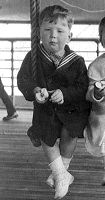

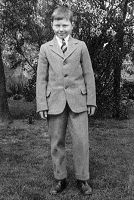
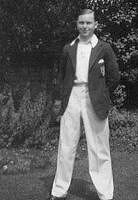
Peter Cattley
| Born | 25.12. | 1916 | at | Petrograd (St. Petersburg, Leningrad), Russia | Certificate | |
| Full Name | Alfred Patrick Cattley | . |
| Father | Patrick Cattley | Mother | Nina Cattley (ms Basmanoff) | ||||
| Christened | . | . | at | . |
| Died | 11.4. | 1941 | at | Urris Hills, Donegal | Killed in action (aircraft crashed in bad weather). | Certificate |
Alfred Patrick Cattley was born in December 1916 at Petrograd, Russia, to Patrick and Nina Cattley. He and his family are likely to have left Russia hurriedly in early 1917 as the Russian revolution developed. From an early age, he was known as Peter [1], possibly in memory of the town in which he was born, in which his family had made their home for several generations, and from which they were so irrevocably removed in 1917 while Peter was still a baby.
 |
 |
 |
 |
| Peter on ship, 1920,... | ...at Harbin, 1922,... | ...ready for school, 1930,... | ...and at school, 1933. |
In 1920 Peter travelled on the liner "Empress of Japan" to Kobe, Japan, then on to Harbin in Manchuria, where the family lived for at least four years in a small British community [1]. In 1930 he started at Berkhamstead School, Herts, where he completed his schooling. From 1934 to 1938 he was employed as a book-keeper with J.H.Vavasslur & co Ltd, Indian Merchants, of London EC3.
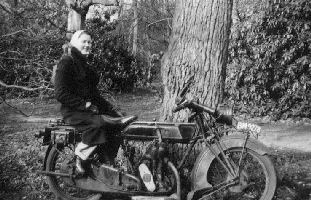 |
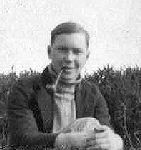 |
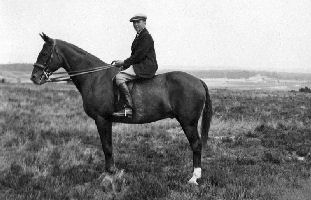 |
| Peter's motor bike & friend, 1937-8. | 1937-8. | Peter riding in Devon, 1936-7. |
In February 1938, Peter applied to join the RAF and was graded fit as a pilot. In May '38, he joined the Elementary Flying Training school at Ansty [5]. Here he was trained on Avro Cadet II biplanes by Air Training Services Ltd., under contract to the MoD. Also seen at Ansty were Hawker Harts, and Harrow & Whitley bombers [1]. In September '38 he attended a short officer training course at Uxbridge, where he was recorded as a Flying Officer, 40888, on probation for a short service commission of 4 years. In March 1939 Peter was passed out from course no. 9 of 21 Training Group, Flying Training School Montrose [5].
Peter's first operational posting was to no. 1 Artillery Co-op Unit, initially at Gosport, Hants then from September '39 at RAF Thorney Island. In March 1940, he was posted to 608 Squadron at Thornaby, Lincs, flying Avro Ansons on east coast convoy escort duties [5].
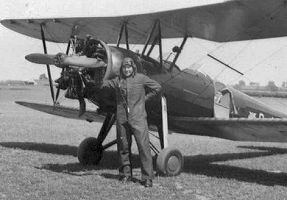 |
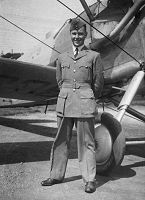 |
|
| Peter and an Avro Cadet II training biplane.... | . | ... and with another biplane, RAF Ansty, May 1938. |
In November 1940, 221 Squadron (Coastal Command) was formed at Bircham Newton, Norfolk, to provide maritime patrols against the increasing threat to our convoys from U-boats. In December 1940, Peter Cattley was one of ten pilots transferred from 608 squadron to form the nucleus of the new 221 squadron [2]. After training with standard Mk.1c Wellington bombers, in early 1941 they received the first of the Mk.VIII Wellingtons fitted with the long-range ASV Mk.II anti-submarine radar. In April, the squadron began a move to its operational base at Limavady, in the north-west of Ireland, and Peter was among the first batch to arrive there. He flew two successful patrols, then on 11th April (Good Friday) he was flying Wellington W5653[4] on an anti-submarine patrol over the Atlantic. Cloud and poor visibility hampered his return to Limavady, they missed the airfield, and flew another circuit to attempt to get a better location. They obviously didn't get it quite right, and crashed just 100ft below the top of the Urris hills, between Fort Dunree and Lenankeel, Donegal, with the loss of all 6 crew. [3]
Peter's ashes were scattered in the garden of remembrance at Golders Green crematorium, Hendon [1],[2].
Sources: [1]Family records; [2]Commonwealth War Graves Commission database; [3]History of 221 Squadron; [4]"High Ground Wrecks & Relics", D.J.Smith, Midland Publishing 1997; [5]Tim Cattley's research
Page last updated 15 August 2006